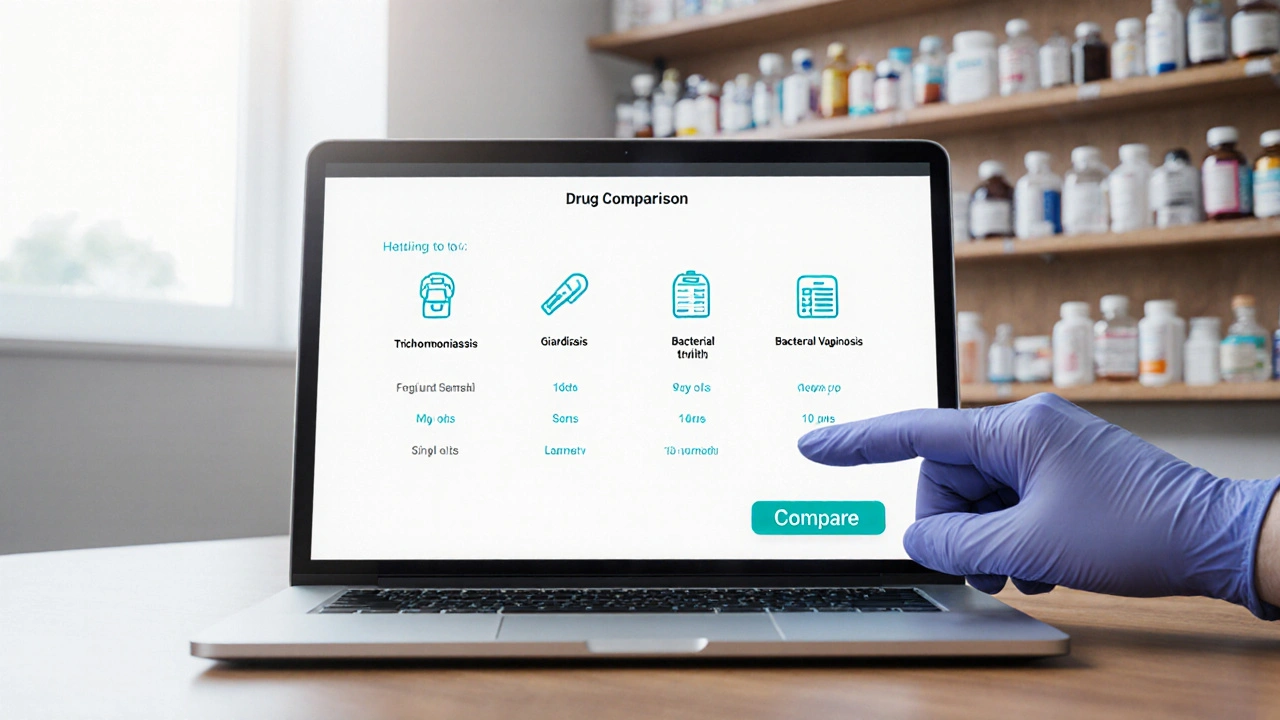Tinidazole – Uses, Dosage, Side Effects & FAQs
When working with Tinidazole, a nitroimidazole antibiotic used for bacterial and protozoal infections. Also known as Snaxid, it disrupts DNA synthesis in susceptible microbes, leading to their death, you’re dealing with a drug that’s both potent and fairly specific. If you’re looking for reliable information on Tinidazole, you’re in the right place. The medication belongs to the Nitroimidazole class, a group of antibiotics that target anaerobic bacteria and certain parasites, which means it shares some properties with older drugs like metronidazole but often offers a shorter course and fewer side‑effects. Understanding how this class works helps you see why tinidazole is chosen for things like bacterial vaginosis and certain types of traveler’s diarrhea. The drug requires a prescription, and its effectiveness hinges on taking the full regimen even if symptoms fade early.
How Tinidazole Relates to Common Infections and Alternatives
One of the most frequent reasons doctors prescribe tinidazole is for Bacterial vaginosis, an imbalance of vaginal flora that causes discharge, odor, and irritation. In clinical practice, tinidazole often outperforms metronidazole in this setting because it can be taken for a single dose or a brief five‑day course, improving adherence. Speaking of Metronidazole, an older nitroimidazole that’s been used for decades against similar bugs, many patients report fewer gastrointestinal complaints with tinidazole, though both share the risk of a metallic taste. Beyond BV, tinidazole is also effective for trichomoniasis—a sexually transmitted protozoal infection—but that topic will surface later in the guide. The choice between tinidazole and its older sibling often depends on the infection’s severity, patient tolerance, and the need for a quick, simple regimen. Knowing these nuances lets you discuss the best option with your healthcare provider, especially if you’ve experienced side‑effects from metronidazole before.
When it comes to dosing, tinidazole is typically prescribed as 2 g once daily for five days for bacterial vaginosis, or a single 2 g dose for trichomoniasis. The drug is metabolized in the liver, so it’s wise to avoid alcohol for at least 24 hours after the last dose to prevent a nasty disulfiram‑like reaction. Common side‑effects include nausea, headache, and a brief metallic taste, but serious reactions are rare. Interactions with anticoagulants or certain antiepileptics can raise concerns, so always share your full medication list with your prescriber. By the end of this guide you’ll have a clear picture of when tinidazole is the right tool, how to use it safely, and what to watch for after treatment. Below you’ll find a curated set of articles that dive deeper into each of these aspects, from detailed dosing tables to real‑world patient experiences, giving you the practical insight you need to make informed decisions.
Tinidazole vs Alternatives: Which Antiprotozoal Drug Is Best?
A side‑by‑side look at Tinidazole versus Metronidazole, Secnidazole, and other antiprotozoal drugs, covering dosage, cost, safety, and how to pick the right treatment.





